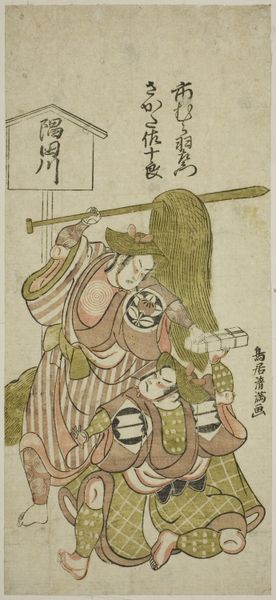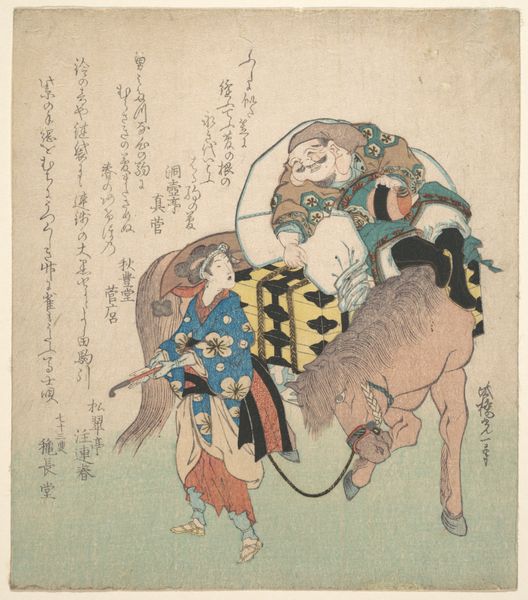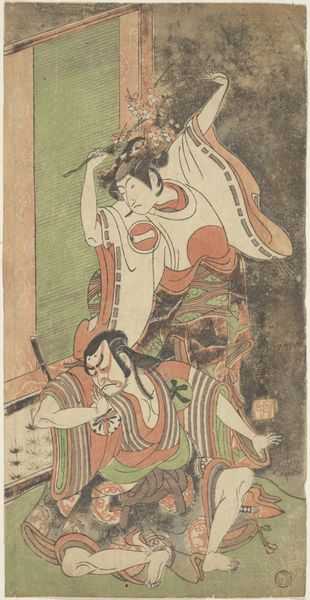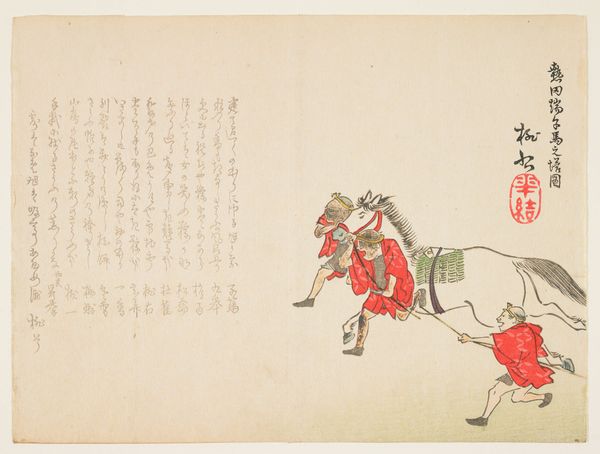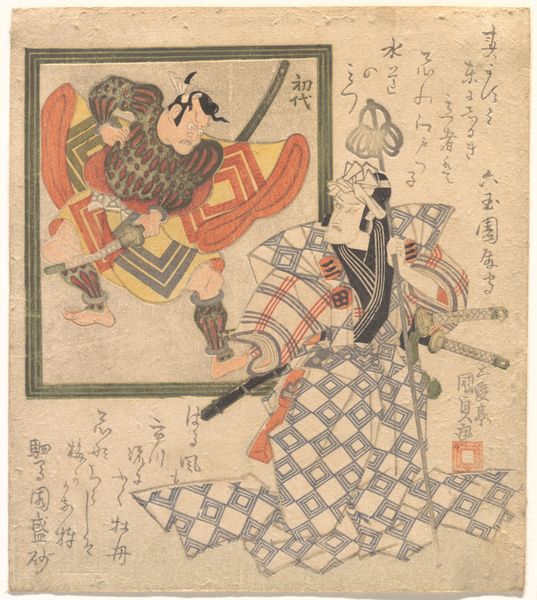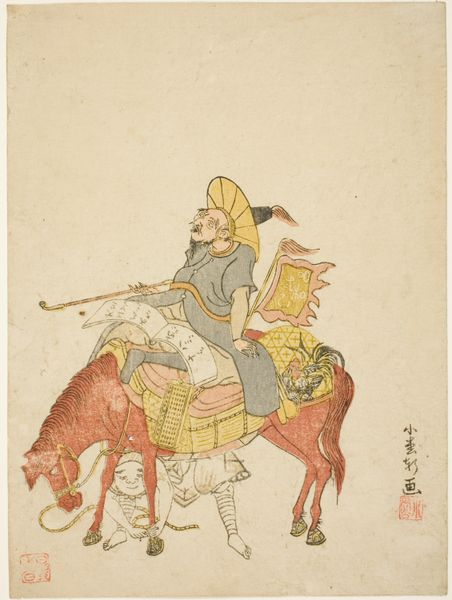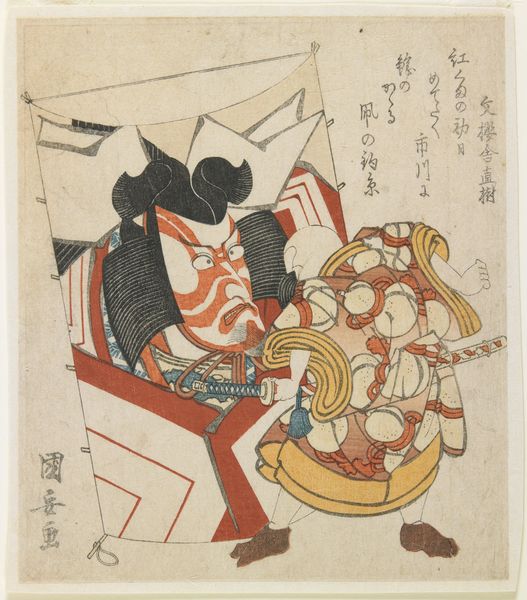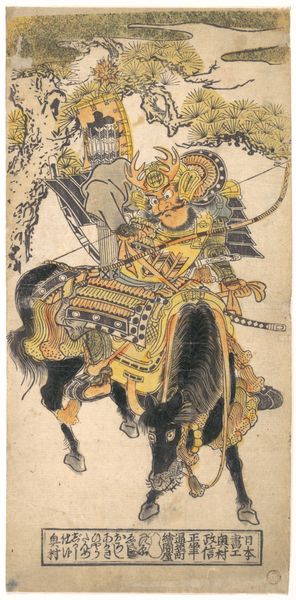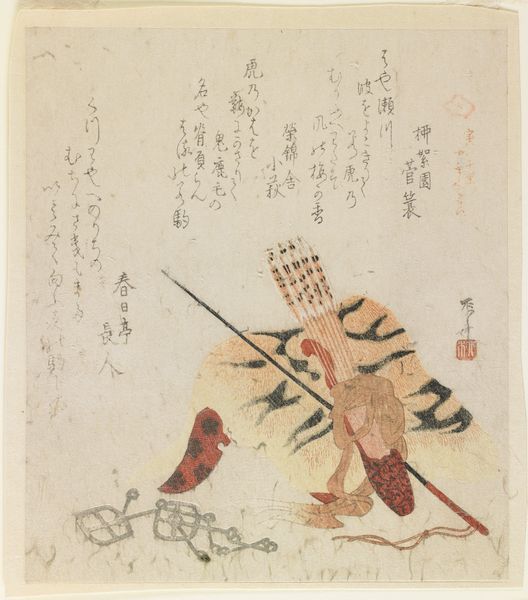
print, ink
#
narrative-art
#
ink painting
# print
#
asian-art
#
ukiyo-e
#
figuration
#
ink
Dimensions: 8 7/16 x 7 1/2 in. (21.4 x 19 cm) (image, sheet)
Copyright: Public Domain
Curator: We’re looking at Totoya Hokkei's "No. Horse of a Chinese General," likely printed between 1810 and 1839. It's part of the Ukiyo-e tradition, currently residing here at the Minneapolis Institute of Art. Editor: It feels restless, almost agitated. The reddish-brown inks lend an earthy, perhaps even martial quality. It feels far more like seeing action than viewing something symbolic. Curator: Yes, Ukiyo-e prints, though often depicting leisure, did engage with heroic tales. Notice the General's almost fierce expression and how Hokkei renders his command of the animal. Think of the horse not just as transportation but as an extension of the General's power. Its stance mirrors his readiness for conflict. Editor: But even this 'ink painting' aesthetic had material concerns; the creation and distribution of prints such as this one, with its ink, paper, and carved blocks—all had material and social implications. Also consider how this image circulated: Was it truly intended as high art or more for wider circulation as part of an emerging media landscape? Curator: Both, perhaps. There's undeniable artistry in the line work, particularly in conveying the texture of the horse's mane and tail, and that of the General’s clothing. Look at the symbolic resonance of depicting a figure from Chinese history. There’s cultural capital at play here. Editor: The texture really stands out. How much of its character hinges on the materials available to the artist? Thinking about the kinds of paper, inks, and carving tools available really transforms our ideas around artistic skill at this point. Also, its creation certainly took teams of craftspeople: What are we meant to think about the laborers? Curator: Indeed. And as the original mass media of its time, Ukiyo-e had to balance aesthetic quality with the material realities of production. We tend to view them now through the lens of fine art, forgetting that context of mass appeal and relative affordability, and the impact this had for society and politics. Editor: Considering its existence as a product throws open new perspectives on value. What happens when an image initially designed for commerce later achieves art world status? Curator: Ultimately, "No. Horse of a Chinese General" sits at an interesting crossroads, encapsulating martial values, while also revealing social practices around production. Editor: Precisely! We’re really seeing not only Hokkei’s artistry, but an entire economic system in that image.
Comments
No comments
Be the first to comment and join the conversation on the ultimate creative platform.

